35 Leaders on the Successes and Challenges of Project-Based Learning
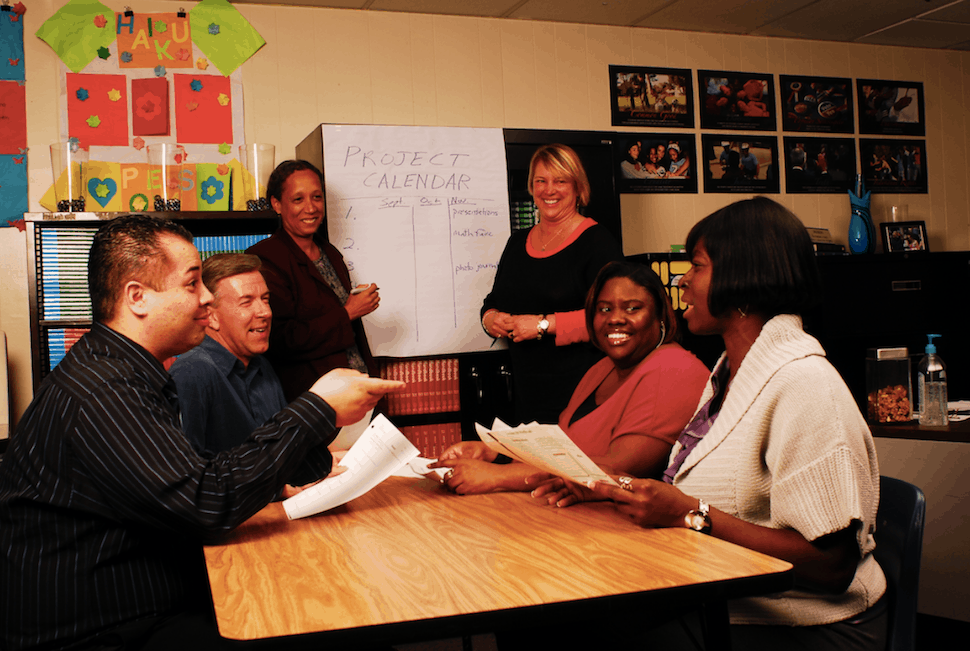
With colleagues at the Buck Institute for Education (BIE), the Getting Smart team is working to support high quality project-based learning (PBL). We asked learning experts what’s working in PBL and what needs to improve. Project management skills are important for all young people and the teachers and leaders who work with them. We surveyed teachers, principals, superintendents, parents, and nonprofit and foundation executives that support high quality projects in schools and districts. We also talked with people in the business community who value the importance of PBL for teaching 21st century skills and important project management skills. Here are some of their responses:
How is PBL Implemented Effectively? What’s Working with PBL?
Andrew Rothstein, NAF: “NAF uses PBL in all 30 of its courses and include project artifacts for NAFTrack Certification. We work with NAFTrack partners to verify that the project reflect professional practice and standards.”
Bailey Thomson (@baileythomson), SPARK Schools: “Asking students what they want and need and trusting them enough to build models according to their responses. Equipping all staff (academic and non-academic) with professional development that drives student achievement through academics and school operations. Partnering with parents to increase empowerment and accountability of both students and staff.”
Chris Lehmann (@chrislehmann), Science Leadership Academy: “Creation of a common language of PBL within the school, with shared tools and shared processes, so that the framework of PBL is shared and transparent for students. This creates the conditions where students do not get lost in the spaces between kids. What we want is for students to develop that strong language of teaching and learning across disciplines, so they are spending their mental energy on the work, not on the instructions or on framework.”
Chris Sturgis (@sturgis_chris), Competency Works: “Some of the best I’ve seen is at ACE Leadership High where the projects are developed in partnership with employers and real-world application.”
David Conley (@drdavidtconley), EdImagine: “As part of a comprehensive program of school improvement focused on enhanced college and career readiness, and not an isolated program.”
Jaime Casap (@jcasap), Google: “It’s not just about picking a learning model. It’s about holistic transformation – vision, culture, PD, tech strategy.”
James Campbell (@therealjamcam), Mount Vernon Presbyterian School: “We started by having a summer learning program that involved reading articles and one required book on PBL. Each teacher crafted a PBL unit and as a whole school we practice a PBL protocol to fine tune units. We are currently implementing PBL and gathering feedback.”
Karla Phillips (@azkarla), Foundation for Excellence in Education: “Clear outcomes (competencies) with a clear understanding of rubric for mastery.”
Michael Golden (@Educurious), Educurious: “We have developed ten design principles that start with positioning students at the center as authentic, relevant problem solvers on trajectories toward mastery. Teachers are positioned as activators, and they perfect their craft as they “Adopt, Adapt and Innovate” on problem-based projects and progress down the learning curve in a supportive professional learning community.”
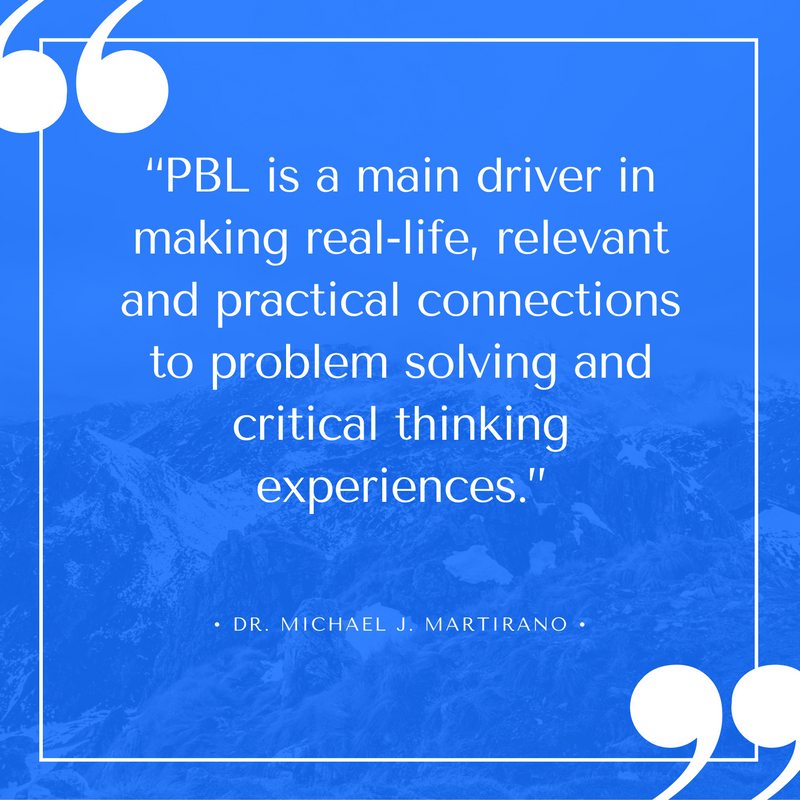
Dr. Michael J. Martirano (@mjmsuper), West Virginia Department of Education: “PBL is a main driver in making real-life, relevant and practical connections to problem solving and critical thinking experiences.”
Nicole Assisi (@thriveps), Thrive Public Schools: “PBL works best in a strong learning community. Teachers have to feel supported, safe to experiment, learn from mistakes. Educators must model the messy courage that is at the heart of PBL. Huge learning happens.”
Ray Pecheone (@Stanford_SCALE), Stanford SCALE: “Funded by the Lucas Foundation, we are designing a PBL Curriculum for 6th, 7th, and 8th grade. Our most recent findings show that students in PBL classrooms are significantly out-performing students in non-PBL classrooms.”
Shane Krukowski (@pblhq), Project Foundry: “Delineate and embrace the continuum of project-based learning…. teacher-led, managed, joint-managed, student-managed, student-led. Team vs.Class vs. Common vs. Individual. Don’t let quality be an excuse for not meeting people/teachers/schools where they are and what they have to work with.”
Susan Enfield (@Suptenfield), Highline Public Schools: “It works best when projects are real and shared publicly. As a former high school journalism teacher, having my students write, design and publish a monthly newspaper read by the entire school community and beyond was one of the best examples of real project-based learning.”
Tommy Chang (@SuptChang), Boston Public Schools: “Effective PBL requires: 1) Backwards design from standards/competencies to authentic assessments- real world, performance-based (rather than multiple choice/short answer assessments); 2) Use of holistic rubrics; 3) Leverage technology for content delivery and simple formative assessments; 4) Integrating student ownership in the project design and implementation processes.”
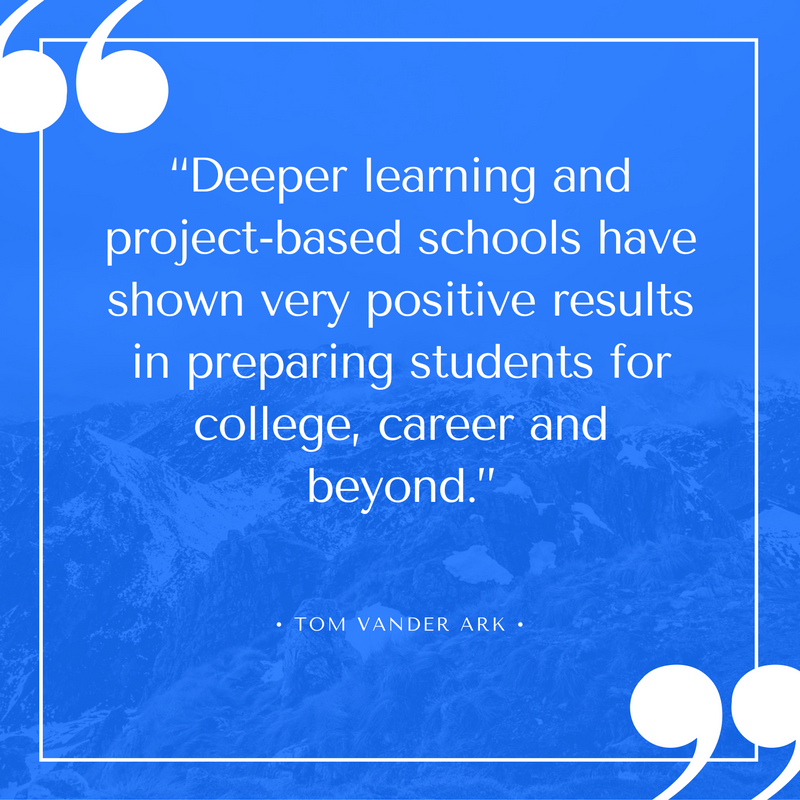
Tom Vander Ark (@TVanderArk), Getting Smart: “Deeper learning and project-based schools have shown very positive results in preparing students for college, career and beyond.”
What Needs To Improve?
Andy Calkins (@andrewcalkins), NGLC:
- Teacher capacity;
- Next gen school models in which PBL strategically resides;
- Free item banks of high quality PBL units;
- Better designs for assessment of PBL work products and work-process indicators;
- Deeper/broader understanding of and research on how PBL can work with below-grade-level-skilled students (who need deep attention to core academic skills); and
- Better PBL designs that reflect the principles from Project Zero like whole-game learning.
Annette Diefenthaler (@annette_di), IDEO: “The big challenge is…how do we know it’s working? There is a lack of clearly understandable metrics that makes both students and parents, and sometimes even educators, feel safe that PBL really equips them for their future. Because students are still largely aiming, and are told to aim for college, entry requirements loom large, and there is a nervousness about whether PBL will actually prepare students sufficiently. Higher engagement, satisfaction, joy of learning…while in theory, many would agree these are the most important aspect of learning, when it comes to the tough decisions about a students’ path or future, they seem to take the back seat, and clearly validating metrics for “hard skills” seem to still be valued higher. This feels like the most interesting area for innovation around PBL – How might we help parents and educators better understand what progress students are making? How might we help students better evaluate their own development? How might we develop metrics that help students know they are ready for college?”
Blossom Johnston, Albertson Family Foundation: “The work we’ve funded in this space in Idaho over the past four years point to a few key lessons. We’ve seen that this is a really difficult learning approach that requires a lot of time, effort, resources and support to implement.”
Ben Kornell (@benkornell), Envision Schools: “Almost all educators recognize that PBL is essential to build cognitive and non-cognitive skills required for success in the modern world, and yet our school and district-level systems and structures have not adapted to allow this to happen. Good educators always begin with the end in mind, and so we believe that assessment systems are the best place to start. By evolving to performance assessments, including public portfolio defenses, we believe we can backwards design school systems to support project-based learning and develop students with the knowledge, skills, and self-awareness to thrive in the 21st century!”
Burak Yilmaz (@HarmonyEdu), Harmony Public Schools: “To bring high-quality PBL to scale, teacher preparation programs must change and train pre-service teachers in PBL so that our teaching workforce becomes more equipped with the correct mindset, technology, and know-how to carry out PBL in their classrooms. I believe designing/writing high quality PBL requires a completely different skillset than implementing high-quality PBL. Therefore, supporting teachers in PBL must be two-fold: while we nurture and amplify the curricular/instructional talent of our project design teachers, we should put equal -if not more- emphasis on training ALL teachers in the effective implementation of high quality PBL.”
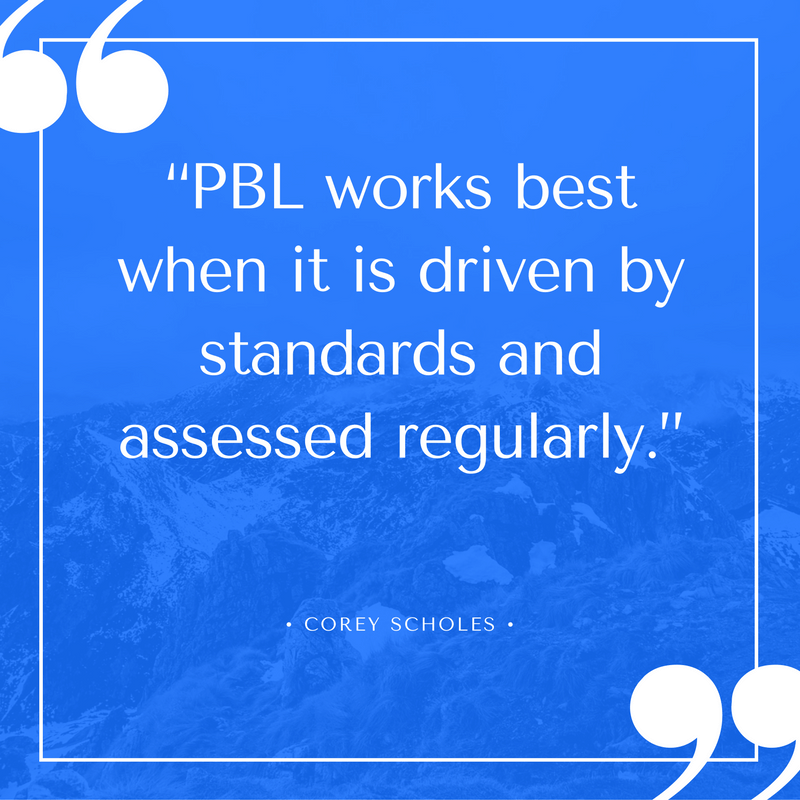
Corey Scholes (@AKASMOM), Kauffman Foundation: “PBL works best when it is driven by standards and assessed regularly (through feedback sessions, draft work etc). Often times, I see projects being implemented that are interesting but not standards-based.”
David Ruff (@GSPDavid), Great Schools Partnership: “To ensure equity, we need to integrate PBL with PBL–proficiency-based learning. Clearly defining what students should know and be able to do as a result of the PBL experience increases the likelihood that together students and teachers can create learning that is rich, thoughtful, and equitable. Lacking proficiency-based learning, I fear that PBL can become rich and engaging for some students, and thoughtless and detracting for others.”
David Ross (@davidPBLross), Partnership for 21st Century Learning: “There is a glaring need for high quality standards of teacher practice that establish clear, rigorous yet achievable benchmarks. Those standards need to be communicated in accessible language to educators, students, parents, community members and organizational partners. The popularity of PBL is leading to widespread adoption, but that adoption is occurring in haphazard fashion. PBL’s reputation is at stake.”
Eric Sheninger (@E_Sheninger), author of Digital Leadership: “Students demonstrate conceptual mastery at the highest levels of knowledge taxonomy by solving real-world predictable and unpredictable problems. In the digital age this is supported and enhanced through the purposeful integration of technology.”
Emily Hassel, Public Impact: “It’s the excellence that’s missing, and that’s not just true of PBL. Most PBL, just as with most instruction, does not require meeting high standards that exceed mere proficiency goals. Students may be engaged, but they aren’t learning the level of knowledge, skills and personal competencies they will need to succeed in the long term. This can be corrected by having great teachers lead teams to set goals for PBL, design assessment rubrics with high standards, and design project parameters that will both engage and propel students forward.”
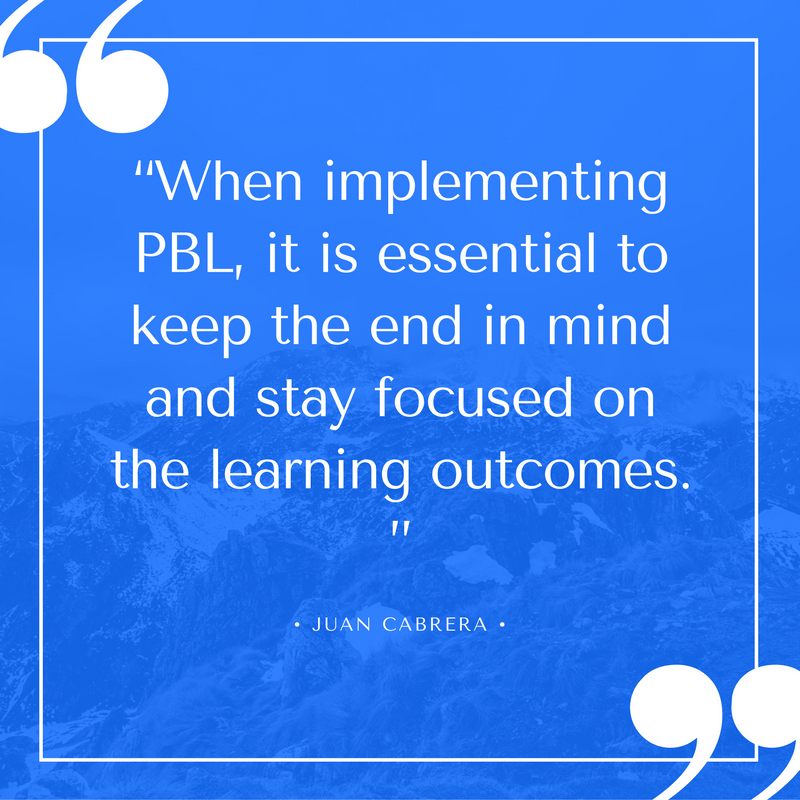 Juan Cabrera (@jecabrera), El Paso Independent School District: “When implementing PBL, it is essential to keep the end in mind and stay focused on the learning outcomes. Additionally, it is important to remain flexible and refine the PBL through reflection and learning from mistakes.”
Juan Cabrera (@jecabrera), El Paso Independent School District: “When implementing PBL, it is essential to keep the end in mind and stay focused on the learning outcomes. Additionally, it is important to remain flexible and refine the PBL through reflection and learning from mistakes.”
Maria Langworthy, Microsoft: “There needs to be greater emphasis on student voice and choice driving the projects, structured tie-in to mastery of curricular skills/content, and requirement for students to implement solution in the real world.“
Mari Ullman (@MariUllmann), World Federation of United Nations Associations: “For WFUNA’s programs, which focus on global citizenship education, it has been helpful to give students the opportunity to identify real-world challenges/issues they’d like to address in their own communities, but that also have global relevance as set out in the Sustainable Development Goals framework.”
Ron Berger (@RonBergerEL), EL Education: “EL Education’s growth in this realm over the past 25 years has been strongest in two areas: 1. More intentional structures and strategies within PBL to promote strong literacy growth, through close attention to standards, texts and tasks. 2. More explicit attention to embedded assessments that align well with targets/objectives and with standards – throughout the full project. We are somewhat of an outlier in this field – EL’s model is much tighter in terms of literacy standards and skills and assessments than many places where PBL takes place. But I remain convinced that this is an important strategy to help land PBL in the core of the academic day for all students, rather than as an extra program or initiative for students already doing well in standard work.”
Scott Benson (@scottb_edu), New School Venture Fund:
- Own the results. PBL advocates need to adopt a both/and mentality toward academic success measures and other methods. Academic competency in reading, writing and math are just as critical as collaboration and creativity, and strive for excellence in each.
- Methods of integrating multiple pedagogical approaches (blended + PBL + socratic seminar).
- Do not expect every teacher to create every project, but acknowledge the desire for flexibility and choice: Adapting great projects > Building mediocre ones from scratch.
Shawn Rubin (@shawncrubin), Highlander Institute: “Student voice and choice in PBL is still absent or surface. Not enough great examples of students being able to match their personalized learning profiles or personal interests to the PBL work they’re doing in their classrooms. We need more cultural relevance in PBL. PBL is a great opportunity to meet urban students of color, LGBT students and ELL students where they are and allow them to bring their personal interests and culture to the table as part of their project.”
Thea Sahr (@TheaSahr), DiscoverE: “We need a shift in the education — teachers need permission to not know all of the answers and instead allow the students to invite them along the journey of exploration. They need this permission from their school administrators and from their students parents.”
Tom Murray (@thomascmurray), Future Ready Schools: “To improve PBL at scale, teacher professional learning is key. At a time where much curriculum is pre-packaged with step by step directions, teachers need to think differently about student learning experiences, and the role of formative and differentiated assessment opportunities, as well as their own role in the learning process. Another aspect that is key to this work is school leadership. As we’ve seen with our work through Future Ready Schools, leadership sets the tone and can create cultures of innovation for this type of learning. At the same time, school leadership can shut down such innovative learning opportunities.”
Tony Wagner (@drtonywagner), Harvard Innovation Lab: “Collaboration between high schools and colleges for clear performance standards and certifications.”
Call to Action
Andy Calkins summarized the need: “The risk is that America will do a lot of project-oriented learning — high on engagement and not much else — and congratulate itself, leaving most of the value of richly and complexly built out PBL on the table.”
You can help. Share your ideas about what’s working and what could improve with #PBL, @Getting_Smart and @BIEpbl. We are also accepting guest blogs about high quality PBL. Please email [email protected] with the title PBL to submit a post and see our guest posting policies.
For more, see:
- What We are Doing to Ensure High Quality PBL for All
- It’s a Project-Based World. Let’s Prepare Students for It
- Promising Practices in Equity and Project-Based Learning
This blog is part of the High Quality PBL project. This project is supported by Project Management Institute Educational Foundation (PMIEF) and the William and Flora Hewlett Foundation. For more, see www.BIE.org and follow @BIEpbl for all the latest news and resources on high quality project based learning and use hashtag #ProjectBased or #PBL.
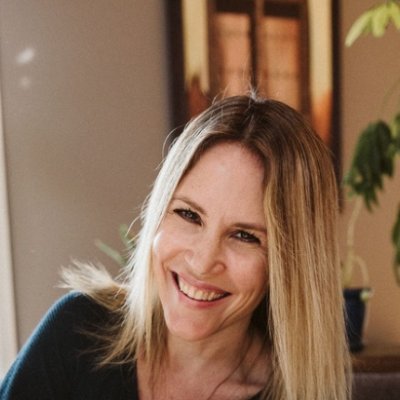


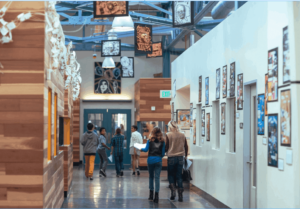
Riaan du Plessis
I think PBL is a great way to help special needs students. It is important to keep children engaged with a program that is intuitive and fun at the same time. Thank you for sharing all the different point of views.